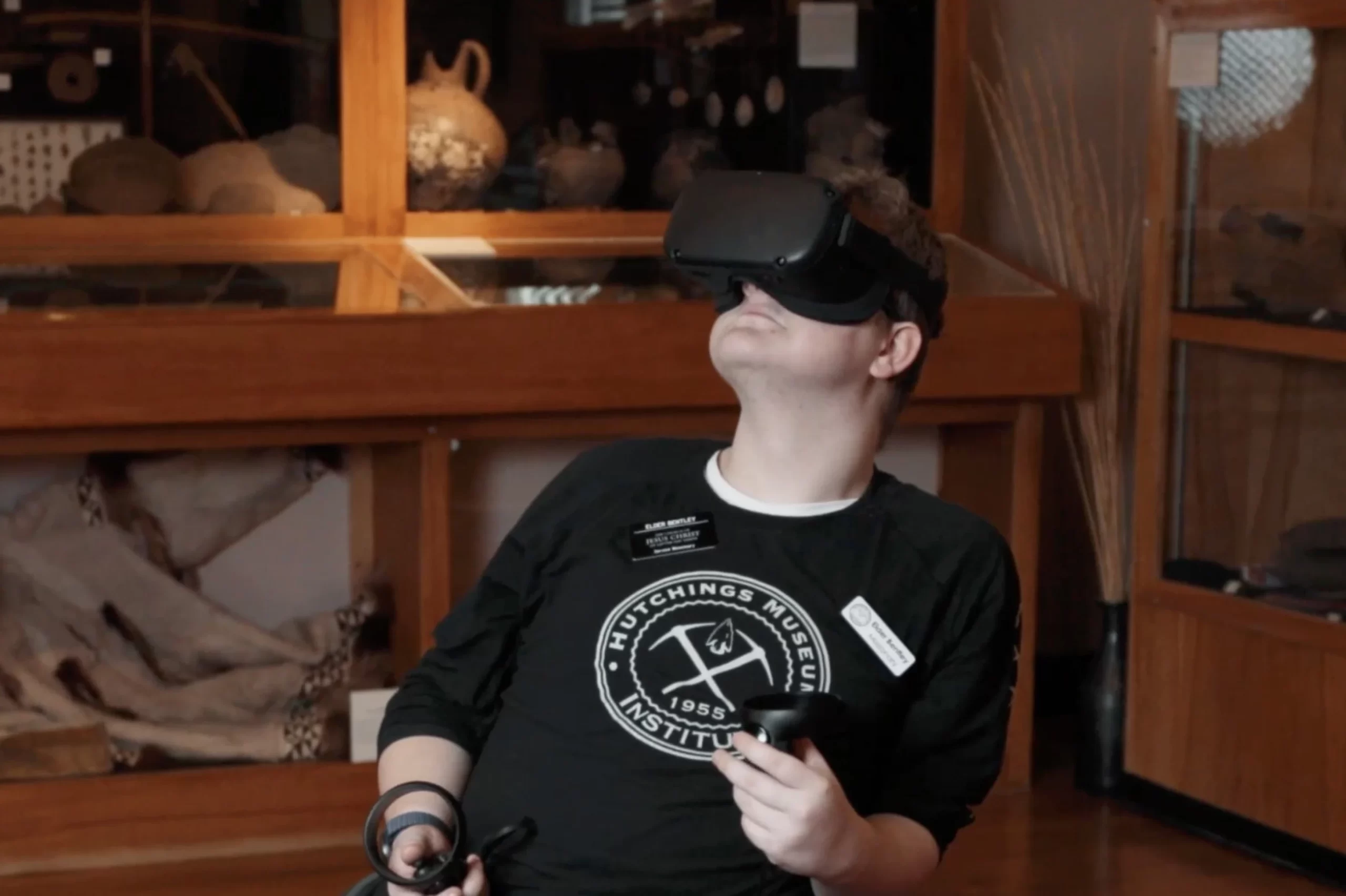Virtual Reality grants access to places so many of us have been left out of in the past. It is one of the most powerful tools ever invented to explore and experience previously unreachable places.
Using Virtual Reality to increase accessibility
Elder Bentley’s VR experience with Indian Cave Utah
For some people with disabilities, many of the sights and wonders of Utah are inaccessible. That is changing in many regards with the advent of new and advanced virtual reality (VR) technology that can literally put people in places they could only think about going before.
One young man, Elder Gage Bentley (20), is not only enjoying these new VR experiences, but is deeply involved in their development. Elder Bentley is serving as a service missionary for The Church of Jesus Christ of Latter-day Saints in Lehi, Utah with an assignment at the Hutchings Museum Institute.
As part of his assignment, Elder Bentley works with his team to care for the animals in the Museum’s live animal room. He also works with the marketing team managing their Google ads program and website. He is also involved in helping create VR experiences to increase accessibility to those who might not normally be able to have those experiences.
Hutchings is on the leading edge of VR and other technologies to provide 3D digital preservation of historical artifacts, and VR experiences of interesting locations within the state.
Hutchings recently created a VR project inside of Indian Cave, a popular cave for visitors in the foothills of Lehi, Utah. The project created a detailed virtual experience inside the cave moving through the depths and allowing an intricate look at all the details in any direction the VR participant looks.
Due to his personal disabilities, Indian Cave was not accessible to Elder Bentley. But using the VR equipment, he was able to fully see and feel the experience of visiting and climbing through the cave.
“I actually wondered if it would be as real as I imagined the cave being,” said Bentley. “But it was quite real. With VR there’s so much that you can do to help people who are disabled or who are unable to come to specific locations or see those parts of Utah they just normally would not be able to see.
“With Indian Cave I was able to just look at the VR and walk about in the video that is on the museum’s website and just sort of explore around. You wear the VR and with hand controls, it’s like you’re right there.”
For Elder Bentley, the VR placed him in an environment he could now explore with detail and reality that would have been impossible before.
“It was very realistic,” he said. “I thought I was actually in the cave while I had the headset on.”
According to Daniela Larsen, executive director of Hutchings Museum Institute, there are experiences most people take for granted that are not available to many people with a disability. Even museum exhibit cases can be too high to access. In the past, experiences weren’t designed for those with different abilities. But new technologies are changing that. Museums such as Hutchings are developing innovative ways to create new and accessible experiences for more people utilizing VR technology.
“I think some people have the idea that they’ll never be able to go to a particular site, and so they don’t even want to see the technology that could bring them these experiences.”
Elder Bentley
“The technology allows us to provide an experience that’s very similar to the real thing,” said Larsen. “Additionally, some virtual reality experiences allow more than one person to participate so you can actually share the experience with your friends.”
When asked if VR would be a game-changer for those with disabilities like Elder Bentley’s Spina Bifida, his response was rather surprising indicating perhaps not all people would try out VR experiences.
“I think it depends on the person,” he said. “I think some people have the idea that they’ll never be able to go to a particular site, and so they don’t even want to see the technology that could bring them these experiences. Some people just don’t like change.”
Elder Bentley continues by pointing out that the potential for VR is “really, really amazing.”
“With VR you’re able to see a different perspective—a different point of view,” he said. “Because those places are out there. And now, we’re able to be in the cave, in the Narrows, or at Zion through the power of technology.”
Elder Bentley has no plans to stop just with Indian Cave. He has given a full list of locations he wants to visit to the Hutchings Museum Institute’s VR team.
Cory Maloy

